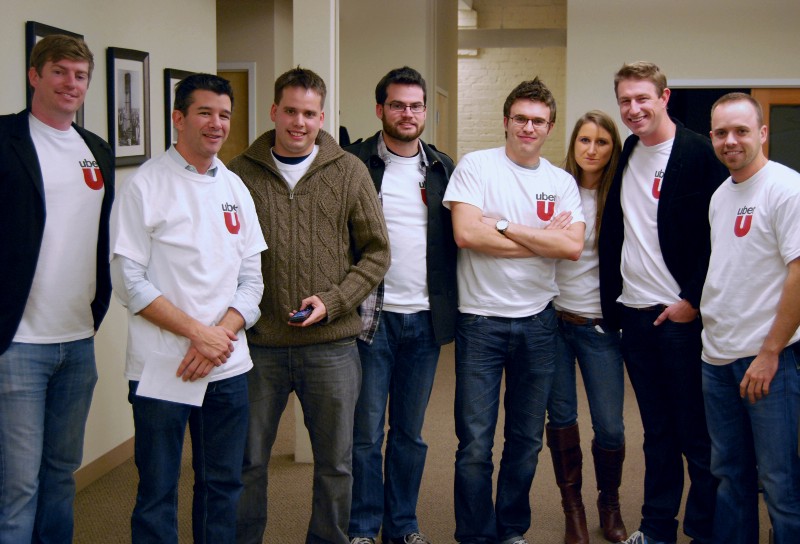One of my most popular posts from July 8, 2013
Harvard Business School Professor John P. Kotter
Years ago I was invited to join a newly forming Intel marketing group comprised primarily of Ivy League MBA‘s, with a few of us Intel veterans thrown into the mix to create some cross-fertilization in the group. This was the famous period of Harvard MBA’s belief that they were all marketing gods, and needed only to be ruthless: greed was good. One of my Harvard educated Intel colleagues related a story of HBS students playing an allegedly “friendly” game of football on the green next to the Charles River. One player suffered a compound fracture of his leg. While waiting for an ambulance, a member of the other team came up and demanded to know when the game would resume. Everything was about competition and one-upmanship. To this day I remember fondly (believe it or not) that this was also the mantra of our Intel group. Who got the girl on Friday night: who got stuck with the bar tab. There was a big scoreboard in the sky tabulating the imaginary results. Perhaps against the odds, our group survived and succeeded famously. Many of us are still very close personal friends. One is the godfather of my son.
Ray Rund, one of my Intel colleagues, and Harvard MBA told me another story of HBS students eager to take John Kotter‘s leadership class, at the time called “Power & Influence.” They all thought that Kotter’s course would teach them how to become the meanest “sons-of-bitches in the valley.” Ray amusingly remembered that Kotter’s course taught them the exact opposite: managers must first learn to be humble, connect and gain the respect of their subordinates, before attempting to lead, or they would be doomed. The book version of Kotter’s course is now 30 years old, but is still as relevant as ever. It is filled with case studies of “hard asses” who failed miserably.
I have often explained Kotter’s point to others by using the example of an old WWII film clip of Lord Louis Mountbatten, leading the beleaguered British commandos in Burma against overwhelming Japanese forces. Mountbatten was standing on a pedestal in some godforsaken Burmese village, with his troops standing at attention in rank. The first thing Mountbatten did was to beckon his troops to break rank and come up near him. The old film clip speaks volumes about Mountbatten’s intuitive understanding of leadership.
Specialists in organizational behavior probably like to debate these points, pointing out the Peter Drucker “high task, low relationship” approach to change management. Basically, like the George S. Patton “school of management” in the film, kick ass and take names until the organization submitted to his will. As the film shows, this approach has its drawbacks.
Ironically, I had learned Kotter’s lesson in leadership in my first assignment at Intel, managing 250 people running a semiconductor manufacturing operation. On my first day, my manager introduced me to my people, half-jokingly saying to them, “Let’s see how long it takes you to break your new supervisor!” Clearly, I needed to get with their program. Just for the record, my manager, Dean Persona and I became fast friends. My employees had the knowledge of how to get the job done, and I did not. It is a valuable lesson I have never forgotten. I managed to get the respect of my people by respecting them. When an extra effort was required, I could ask for that extra effort, and it was given willingly. Others failed miserably in their jobs while I rapidly rose to bigger and better things.
When I noticed this HBR blog post on leadership, titled “Connect…Then Lead,” I thought of Kotter, who is still teaching at Harvard. I also see another potential case study of failure developing now. For all of the good intentions of this manager, he is failing to understand Kotter’s lesson about leadership. This manager professes openness. This manager made a point to take a very modest office and leave his door open. But despite these superficial moves, in reality, the substance of his management style is that of an austere, autocratic manager who isolates himself behind a wall of handlers who manage access to him, even reading all of his emails, which is offensive to many. It takes weeks to schedule a simple meeting with this manager if you can successfully maneuver the gauntlet of handlers. Then the meeting will typically start late, only to be ended by another handler interrupting the meeting, tapping on their watch, to extract the manager early from the meeting, because he is so “busy” he must move on. He demands that his schedule is cleared for his own priorities.
The rudeness and distant behavior of this manager is obviously having a serious impact on the manager’s effectiveness with his people, but the manager seems more interested in his own matters. It has been noted by some that it is not uncommon for autocrats to view themselves as being open and welcoming toward their people when in reality the manager’s true behavior exhibits an extreme distance, lack of sensitivity, and the subordinates are intimidated by his overbearing personal style. This is all laid out in Kotter’s books and in the following HBR Blog article. History seems to repeat itself.
Andrew Carnegie, a scion of the Gilded Age of Monopolists at the turn of the 20th Century, is noted for this quote about the importance of his employees…
“Take away my factories, my plants, take away my railroads, my ships, my transportation; take away my money, strip me of all these, but leave me my men and in two or three years, I will have them all again.” Despite Carnegie’s megalomaniacal tendencies, he nevertheless seemed to understand the importance of having a strong bond with his people.
Connect, Then Lead
Reblogged from the HRB Blog
Is it better to be loved or feared?
Niccolò Machiavelli pondered that timeless conundrum 500 years ago and hedged his bets. “It may be answered that one should wish to be both,” he acknowledged, “but because it is difficult to unite them in one person, it is much safer to be feared than loved.”
Now behavioral science is weighing in with research showing that Machiavelli had it partly right: When we judge others—especially our leaders—we look first at two characteristics: how lovable they are (their warmth, communion, or trustworthiness) and how fearsome they are (their strength, agency, or competence). Although there is some disagreement about the proper labels for the traits, researchers agree that they are the two primary dimensions of social judgment.
Why are these traits so important? Because they answer two critical questions: “What are this person’s intentions toward me?” and “Is he or she capable of acting on those intentions?” Together, these assessments underlie our emotional and behavioral reactions to other people, groups, and even brands and companies. Research by one of us, Amy Cuddy, and colleagues Susan Fiske, of Princeton, and Peter Glick, of Lawrence University, shows that people judged to be competent but lacking in warmth often elicit envy in others, an emotion involving both respect and resentment that cuts both ways. When we respect someone, we want to cooperate or affiliate ourselves with him or her, but resentment can make that person vulnerable to harsh reprisal (think of disgraced Tyco CEO Dennis Kozlowski, whose extravagance made him an unsympathetic public figure). On the other hand, people judged as warm but incompetent tend to elicit pity, which also involves a mix of emotions: Compassion moves us to help those we pity, but our lack of respect leads us ultimately to neglect them (think of workers who become marginalized as they near retirement or of an employee with outmoded skills in a rapidly evolving industry).
To be sure, we notice plenty of other traits in people, but they’re nowhere near as influential as warmth and strength. Indeed, insights from the field of psychology show that these two dimensions account for more than 90% of the variance in our positive or negative impressions we form of the people around us.
So which is better, being lovable or being strong? Most leaders today tend to emphasize their strength, competence, and credentials in the workplace, but that is exactly the wrong approach. Leaders who project strength before establishing trust run the risk of eliciting fear, and along with it a host of dysfunctional behaviors. Fear can undermine cognitive potential, creativity, and problem solving, and cause employees to get stuck and even disengage. It’s a “hot” emotion, with long-lasting effects. It burns into our memory in a way that cooler emotions don’t. Research by Jack Zenger and Joseph Folkman drives this point home: In a study of 51,836 leaders, only 27 of them were rated in the bottom quartile in terms of likability and in the top quartile in terms of overall leadership effectiveness—in other words, the chances that a manager who is strongly disliked will be considered a good leader are only about one in 2,000.
A growing body of research suggests that the way to influence—and to lead—is to begin with warmth. Warmth is the conduit of influence: It facilitates trust and the communication and absorption of ideas. Even a few small nonverbal signals—a nod, a smile, an open gesture—can show people that you’re pleased to be in their company and attentive to their concerns. Prioritizing warmth helps you connect immediately with those around you, demonstrating that you hear them, understand them, and can be trusted by them.
When Strength Comes FirstMost of us work hard to demonstrate our competence. We want to see ourselves as strong—and want others to see us the same way. We focus on warding off challenges to our strength and providing abundant evidence of competence. We feel compelled to demonstrate that we’re up to the job, by striving to present the most innovative ideas in meetings, being the first to tackle a challenge, and working the longest hours. We’re sure of our own intentions and thus don’t feel the need to prove that we’re trustworthy—despite the fact that evidence of trustworthiness is the first thing we look for in others.
Amy J.C. Cuddy is an associate professor of business administration at Harvard Business School. Matthew Kohut and John Neffinger are the authors of Compelling People: The Hidden Qualities That Make Us Influential (Hudson Street Press, August 2013) and principals at KNP Communications.








